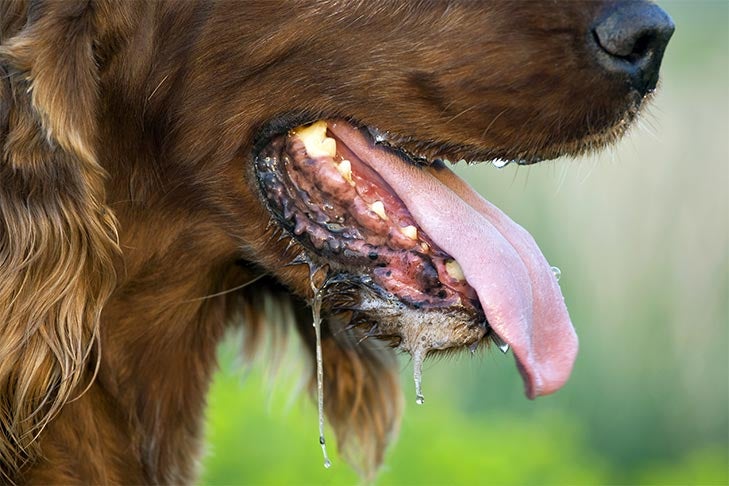
AKC is a participant in affiliate advertising programs designed to provide a means for sites to earn advertising fees by advertising and linking to akc.org. If you purchase a product through this article, we may receive a portion of the sale.
Perfect dog weather means never having to say “it’s too cold” or “it’s too hot” to go outdoors for playing, walks, or anything in between. What temperature is that? It’s different for every dog, but in general, a moderate 70 degrees Fahrenheit usually fits the bill for every dog.
When the weather gets blazing hot, though, it’s important to keep your dog protected from sunburn and UV rays. Knowing how to protect your dog in hot weather, and protect their paws from hot pavement, is critical.
How Hot Is Too Hot for Dog Paws?
When the thermometer registers 85 degrees Fahrenheit and stays elevated throughout the day, taking your dog everywhere you go, even for a short outing, can be dangerous. Spending even a few minutes to meander through an outdoor event can prove hazardous. That’s because you’re wearing shoes to protect your feet, but your dog isn’t.
“Pavement, like asphalt or artificial grass, can become incredibly hot and cause discomfort, blisters, and burn a dog’s paw pads,” says Dr. Jerry Klein, DVM, Chief Veterinary Officer for the AKC and an expert in veterinary emergency and critical care.

Scorching surfaces are especially damaging to puppies with sensitive young paws. So how hot is too hot for a dog’s sensitive paw pads? “If the temperature is 85 degrees or over without the chance for the pavement to cool down, the ground may be too hot for safely walking a dog,” says Dr. Klein.
According to data reported by the Journal of the American Medical Association, when the air temperature is 86 degrees, the asphalt temperature registers 135 degrees. “To find out if the ground is too hot for your dog to walk on, place your hand comfortably on the pavement for ten seconds. If it’s too hot for your hand, it’s too hot for your dog’s paws,” says Dr. Klein.
Your bare foot serves as another good measurement. Hand or foot, the same temperature test works on all types of terrain, including sand, metal, and concrete. And when it comes to a so-hot-you-can-fry-an-egg-on-the-sidewalk surface, don’t discount dirt either.
Heat-Related Health Issues for Dogs
“In addition to damaged paws, hot pavement can also increase a dog’s body temperature and contribute to the development of heatstroke,” says Dr. Klein.
A dog’s normal resting temperature ranges from 99 to 102.5 degrees Fahrenheit. Any temperature over 104 signals heat stress. Over 105 registers as heat exhaustion, and more than 106 is heatstroke requiring emergency veterinary care.
Heat Stress in Dogs
Watch your dog for signs and symptoms of heat stress. These include seeking shade, limiting movement, getting restless, choosing to sit or lie down, uncontrolled panting, nausea, vomiting, reddening skin, and excessive saliva. If you notice any of these, or a combination, treat the symptoms immediately.

Heat Stroke in Dogs
Heat stroke in dogs can be very serious, and may require immediate medical attention. If you see that your dog is acting confused, excessively drooling with thickening saliva, their gums are bright red, blue or purple, they are dizzy, have rectal bleeding, refuse to drink water, have lethargy, lose consciousness or have a seizure, immediate veterinary attention is required.
How to Cool Down a Dog
If any of these symptoms arise, you should immediately seek to help your dog cool down. Find a shady spot, apply ice packs under their front legs on their chest, pour cool water over their head and body, give them water to drink, and give your dog a cooling mat to stand or lie on. If you can, find air conditioning indoors, or in a cooled-off car.
Small and short-legged dogs are particularly susceptible to overheating, as their bodies absorb heat closer to the hot ground. Flat-faced breeds heat up faster, too.
Protecting Dog Paws in Hot Weather
“Dog’s pads need to become acclimated to weather and stress,” says Dr. Klein. “The first long walk or jog of a warm season can often cause blisters on feet.” To help condition your dog’s paws, walk on the pavement during cool weather. The hard surface helps toughen them and builds resistance for when the temperature heats up.
Many canine products help moisturize dog’s pads to prevent cracking from heat. When pads are dry, they’re more susceptible to burns from hot pavement. Dog shoes or all-terrain boots offer protection from hot surfaces, but many dogs need time to adjust to wearing them before the first outing.
Getting the right size—fitting snugly, but not too tight and not too loose—helps your dog acclimate to wearing shoes. Your dog’s feet need some room to breathe. Choose foot coverings with wrap-around closures and full-foot grips on the bottoms. Avoid products that stick to the dog’s pads.

If you must take your dog out during hot weather, avoid the hottest time of day. Walk in the early morning or evening. Choose grassy or shady areas.
For exercise during hot weather, set up a hard, plastic outdoor wading pool made for dogs. Plastic children’s pools tempt dogs to dig and tear. If your dog swims in an adult pool, add a canine life vest for safety.


